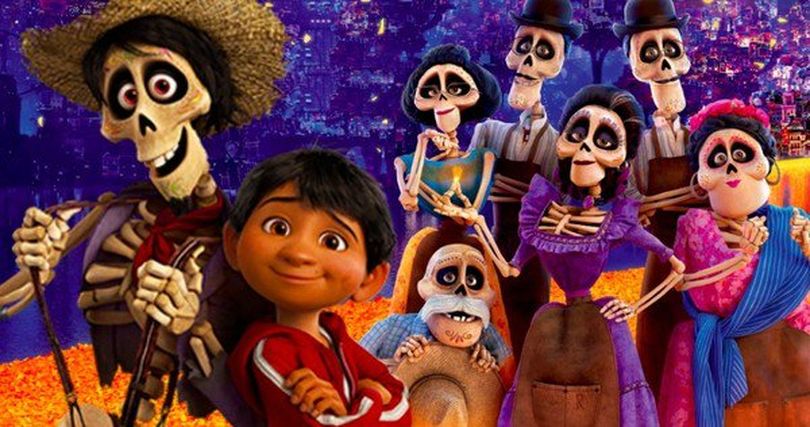Pixar’s ‘Coco’ is for the whole family

It's likely that most moviegoers will be fighting lines to see "Star Wars: The Last Jedi" this weekend. But those who are still looking for a good family film to see, one that doesn't involve lasers, you might want to try "Coco."
Following is the review of the film that I wrote for Spokane Public Radio:
Founded in 1979, Pixar Animation Studios became a subsidiary of Disney in 2006. Over the decades, Pixar has released 19 feature films, including the “Toy Story” trilogy, “Finding Nemo,” “WALL-E” and “Monsters, Inc.,” earned in the process eight Best Animation Oscars (and a grand total of 16 Oscars overall).
So the studio’s latest release, “Coco,” has some pretty big shoes to fill. Or maybe a more appropriate word would be “zapatos,” which is Spanish for shoes.
That’s because “Coco,” though an English-language film, tells the story of a 12-year-old Mexican boy named Miguel (voiced by Anthony Gonzalez) who, during the annual festivities of Dia de Muertos – or Day of the Dead – discovers both a secret involving his past and what appears to be an unlikely path for his future.
I say “unlikely” mainly because that path is tied to music, something that Miguel’s family has forbid ever since his great-great-great grandfather ran off to follow his musical dreams. Spurning music, Miguel’s great-great-great grandmother founded a shoemaking business, which has become the family legacy.
I say “unlikely” also because despite his family’s wishes for him to also become a shoemaker – a special desire of his grandmother Elena – Miguel is obsessed by music. He is particularly taken by the music of Ernesto de la Cruz, a famous Mexican singer/songwriter/movie star who died in a freak onstage accident and whose guitar sits in a tomb set in Miguel’s village.
So when Elena, learning that Miguel is about to enter a local talent contest, smashes his guitar in a rage, he breaks into the tomb and steals de la Cruz’s instrument. That act, though, brings with it a curse that casts Miguel into a netherworld where he is invisible to those still alive yet where he can see, and talk to, the dead – all of whom are portrayed as, prepare the youngest audience members here, embodied skeletons.
From this point on, the plot of “Coco” gets a little complicated. What’s pertinent is that Miguel faces a deadline: It he doesn’t return to the land of the living before sunrise, he will be forced to stay among the dead. But to return he must seek a blessing. His great-great-great grandmother agrees to bless him, though she insists – true to the family tradition she herself instituted – that he give up music.
Refusing to do so, Miguel seeks out de la Cruz. And to find him, he befriends a character named Hector who claims to have once performed with the musical legend. And so proceeds the story, which ends somewhat predictably but, true to form, happily.
Predictability aside, the biggest flaw with “Coco” is the main song, “I Remember.” Unlike the tunes in such films as “Toy Story 2” or in Disney’s “Frozen,” “I Remember” is immensely forgettable.
Yet the vocal talents – especially Gonzalez as Miguel and Gael García Bernal as Hector – are perfectly appropriate. And the animation itself is superb, its renderings of the land of the dead even more vibrant than that of the living.
That’s ironic. Pero también es interesante, no?
